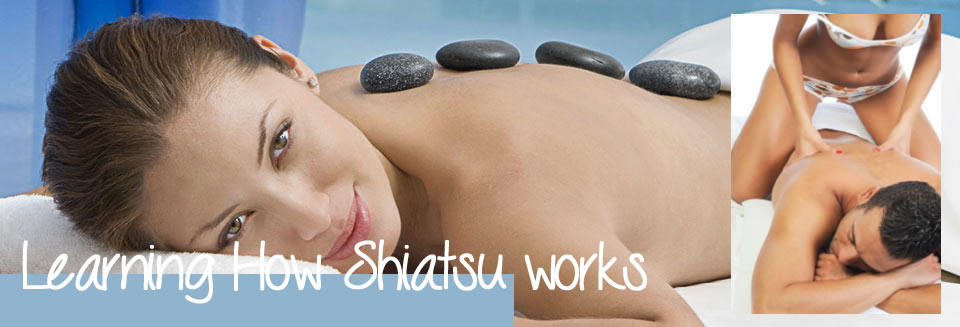yoga & health magazine
Learning How Shiatsu works
Bring in the new year - Yoga & health magazine's Introduction to shiatsu contains very important pointers that will help you learn the art of Shiatsu effectively; it also presents some important 'do's and don'ts' to consider when giving a Shiatsu treatment.
See commonly asked questions about Yoga
Therefore it is strongly recommended that you read it carefully before proceeding to Part One.
- Yin and Yang
- THE ABDOMEN TREATMENT
- Leg Pressure Points
- Preparing for a Shiatsu Session
- The Five Elements
- Shoulder pressure points
- THE STEP-BY-STEP SEQUENCE
- RESOURCES
- The origins of Shiatsu
- Techniques
- How to find the points
- POINTS TO REMEMBER
- How much pressure to use
- SELF-SHIATSU
- Choosing a school or practitioner
- SELF-TREATMENT
- Shoulders Treatment
- Vital organs
- Energy channels
- TREATING THE INDIVIDUAL
- DEVELOPING YOUR TECHNIQUE
- Energy in the hands
- Hara and breathing
- SELF-DEVELOPMENT EXERCISES
- Back of body treatment
- Front of leg pressure points
- Toe Treatment
- Tsubos
- Kyo and Jitsu
- Increasing your sensitivity
- Governing Vessel
- Forehead Massage

DEVELOPING SENSITIVITY TO KI
The techniques used in the basic sequence in Part One included overall stretches and some other instances where both hands or arms are used equally, but the predominant method that you have been using for palm and thumb work has been what is commonly known as 'two-hand work'. This title is somewhat misleading as it actually means that you are using the two hands simultaneously but in quite different ways; one is more passive and inactive and stays more or less in one spot, as the other hand moves along a line of points. This is particularly useful for rebalancing the energy between the two points of contact, and will help you develop, sensitivity to what is going on in particular places.
If you keep practising your Shiatsu technique you will begin to notice that you encounter different 'qualities' of energy or Ki in the points where you apply pressure in the course of treatment. At the most obvious level, as discussed in the back sequence, the body tissue overlying the area you are working on can have very different qualities to the touch - common impressions include tightness, openness, hardness or sometimes a kind of empty lifelessness. These are expressions of the Ki situation in that part of the body, relative to other parts. There is always some degree of relative imbalance or unevenness in the distribution of Ki, however slight - the body tissue will feel different from one area to another; and that is why we do Shiatsu - there will inevitably be some areas that lack Ki and others that hold excess. When you become experienced in the technique of leaning into an area or point with your palm or thumb, you will soon be able to go below the surface of the person and contact the underlying energy, from which you can obtain a more specific sense of what is happening there in terms of Ki.
KI in THE HUMAN BODY
Prices and Tuition
£50 for "First Session" Pilates or Pilates/Yoga or Yoga session, 1 1/2 -2 hours (where a consultation is involved). The first Pilates only or mixed Pilates/Yoga session is £50 for 1 1/2 - 2 hours. £30 for 1 hour £45 for 1 1/2 hours (Minimum rate is £45 for 1 1/2 - 2 hours unless it's a regular £30 1 hour session. ) £60 for 2 hours Other options are available, contact us if for other options. One-to-one rate/small group rates (2-4 clients, rate is the total payment, irrespective of number of participants.) Price reductions are negotiable for regular sessions.
